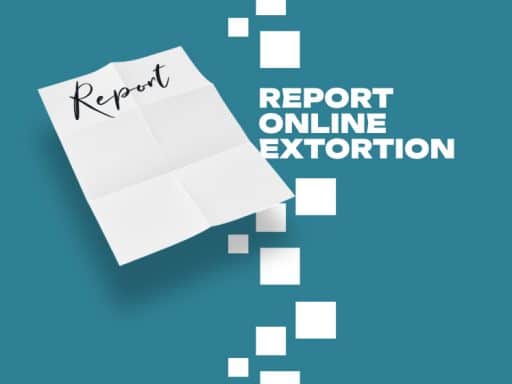“Stay Curious.” These are the very words the popular gay dating application Sniffies uses to encourage its users to abandon their preconceived notions and have a little fun with others. Unfortunately, scammers have also gotten curious about just how easily users of this popular application can be extorted in cases of blackmail known as sextortion.
The anonymity and lack of robust verification on Sniffies, coupled with its “curious nature” and encouragement to cruise, should cause users to pause and carefully consider the potential risks before sharing their own explicit content.
While Sniffies hasn’t faced the widespread data breaches that have plagued other hookup applications like Ashley Madison, the very fabric of its design and the expectations of its user base cultivate a fertile environment for online predators specializing in sextortion. In a 2025 report by Digital Forensics Corp. (DFC) 14.79% of all cases of sextortion reported to the company originated on a dating application(1).
The platform’s emphasis on fleeting encounters and minimal identity checks, while appealing to those seeking discreet connections, inadvertently provides malicious actors with the tools to exploit others. The “curious nature” that draws individuals to Sniffies often translates into a rapid exchange of intimate material between users who possess little to no knowledge of each other’s true identities. This eagerness to share private moments, fueled by a sense of perceived anonymity, can easily cloud judgment and obscure the telltale signs of potential scams.
The Mechanics of Sextortion on the Sniffies Platform:
The inherent anonymity and the ease with which explicit media can be shared on Sniffies open up several avenues for sextortion schemes to take root:
- The Alluring Facade: Perpetrators frequently construct enticing fake profiles to ensnare unsuspecting users. They engage in seemingly authentic conversations, swiftly cultivating a false sense of intimacy and showering their targets with digital affection. This manufactured connection often leads victims to feel secure enough to share private photos and videos. Once this explicit content is exchanged, the predator’s demeanor undergoes a stark transformation, threatening to expose the sensitive material to the victim’s social circles, family, or workplace unless a ransom is paid.
- The Silent Witness of Screenshots: Even interactions that appear entirely consensual can take a dark turn. Sniffies, like many similar platforms, allows users to capture screenshots of chats and media. A malevolent individual can silently archive these images and later wield them as tools of extortion against the victim, even if the initial exchange seemed harmless. The profound fear of their private moments being thrust into the public domain can be a potent motivator for victims to succumb to the blackmailer’s demands.
- Location as Leverage: Sniffies’ core functionality of location-based proximity, while intended to facilitate real-world meetups, can also be twisted for nefarious purposes. This location information can be leveraged by blackmailers to inject an additional layer of fear into their threats, implying knowledge of the victim’s residence or workplace, thereby amplifying the dread of exposure within their local community.
- Exploiting the “Curious” Demographic: Individuals exploring their sexuality or engaging in extramarital encounters may find themselves particularly vulnerable to sextortion schemes. The inherent fear of their activities being unveiled, especially if they are not openly out or if their exploration involves partners outside established relationships, can make them more susceptible to coercive demands for money.

Recognizing the Warning Signs of Sextortion Scams on Sniffies:
Vigilance in identifying red flags is paramount for safeguarding oneself:
- The Blitz of Intimacy: Exercise caution when encountering profiles that aggressively push for the exchange of explicit photos or videos in the very early stages of conversation. Genuine connections typically evolve at a more measured pace.
- The Overture of Overly Intense Affection: While flirtation is a common aspect of dating apps, an excessive display of overly romantic or intense declarations from someone you barely know can be a manipulative tactic designed to lower your guard.
- The Evasion of Real-Time Interaction: Sextortionists often shy away from real-time interactions, such as video chats or in-person meetings, which could potentially expose their true identity. Repeated excuses for avoiding such interactions should trigger suspicion.
- The Veil of Suspicious Profile Details: Inconsistencies within profile information, the use of generic or obviously stolen photos (which can sometimes be identified through reverse image searches), or a notable lack of personal details can all be indicators of a fabricated account.
- The Abrupt Shift in Demeanor: If a contact who initially presented as friendly and engaging suddenly turns aggressive in attempting to gain content, this is the time where you need to block them.
Who Faces the Greatest Risk on Sniffies?
While the threat of sextortion can affect any user, certain factors can heighten an individual’s vulnerability on platforms like Sniffies:
- Those Seeking Discreet Encounters: Individuals who prioritize anonymity and discretion in their online interactions may be less inclined to report blackmail attempts out of fear of having their activities exposed. This reluctance can make them prime targets for predators who believe they can operate with impunity.
- Newcomers to the Realm of Online Dating: Users who are less experienced with online dating platforms may be less familiar with the manipulative tactics employed by scammers and, consequently, more trusting of online interactions.
- Those Who Share Intimate Content Prematurely: As highlighted earlier, the exchange of explicit material serves as the primary catalyst for sextortion. The sooner you share such content with an individual you don’t know well, the greater the potential risk.
Navigating the Aftermath: Steps to Take If Blackmailed on Sniffies:
If you find yourself a victim of sextortion on Sniffies, the recommended course of action mirrors that for any instance of online blackmail:
- Do Not Respond: Do not engage in further dialogue or attempt to reason with the blackmailer. If feel you need to delay them from leaking your content, please explore some of the delay tactics we cover here.
- Resist the Urge to Pay: Submitting to their demands for payment will likely only perpetuate the cycle of extortion. There is no guarantee that the perpetrator will delete the content, and it may embolden them to make further demands.
- Meticulously Document Everything: Take screenshots of all relevant messages, profiles, and any other pertinent information. This evidence can prove invaluable to law enforcement agencies.
- Report the Abuse to the Platform: Utilize Sniffies’ reporting features to flag the offending profile and the illicit activity. While the platform may not be able to directly retrieve your content, it aids them in identifying and potentially removing malicious actors from their service.
- Seek Assistance from Law Enforcement: File a formal report with the FBI’s Internet Crime Complaint Center (IC3). While the process takes time, it is essential.
- Reach Out for Support: Connect with the cybersecurity professionals at Digital Forensics Corp. Our mission is to protect your digital reputation and work to end the threats.

Protecting Yourself in the “Curious” Landscape of Sniffies:
Given the inherent risks associated with anonymous platforms and the sharing of explicit content, adopting proactive safety measures is essential:
- Exercise Extreme Discretion in Sharing: Carefully consider the potential ramifications before sending any intimate photos or videos to someone you’ve only encountered online, regardless of how compelling they may seem. Reflect on the potential consequences should that content fall into the wrong hands.
- Employ Verification Strategies Where Possible: While Sniffies lacks a formal verification process, look for consistency in profile details, ask for more information about their life, and be wary of vague or contradictory responses.
- Resist the Pressure to Share Prematurely: Cultivate trust and get to know someone over a period of time before divulging personal details or engaging in sexually explicit exchanges.
- Maintain a Heightened Awareness of Red Flags: Remain vigilant for the warning signs previously outlined. If an interaction feels unsettling or raises suspicion, trust your instincts.
- Familiarize Yourself with Platform Privacy Settings: Explore any privacy settings offered by Sniffies and utilize them to enhance your security. However, bear in mind that platform security measures cannot offer absolute protection against determined criminals.
- Acknowledge the Enduring Nature of Digital Content: Once something is shared online, its complete and permanent deletion can be exceedingly difficult, if not impossible. Act accordingly with this understanding.
Sniffies, with its emphasis on immediate connections and user anonymity, inherently presents a unique set of risks for its user base. While the platform itself may not be inherently malicious, its design and the behaviors it facilitates can be readily exploited by individuals intent on causing harm through sextortion.
By cultivating an awareness of these potential dangers and exercising prudence in their online interactions, users can significantly mitigate their risk and navigate the platform more safely. But, if you’ve already found yourself in the midst of a sextortion scam, please feel free to reach out to Digital Forensics Corp. our team of specialists are available 24/7 to assist you and provide action steps to protect your digital reputation. Don’t let your fear fuel your sextortionists paycheck. Contact our Sextortion Helpline at 800-849-6515
Sources:
DISCLAIMER: THIS POST IS FOR INFORMATIONAL PURPOSES ONLY AND IS NOT TO BE CONSIDERED LEGAL ADVICE ON ANY SUBJECT MATTER. DIGITAL FORENSICS CORP. IS NOT A LAWFIRM AND DOES NOT PROVIDE LEGAL ADVICE OR SERVICES. By viewing posts, the reader understands there is no attorney-client relationship, the post should not be used as a substitute for legal advice from a licensed professional attorney, and readers are urged to consult their own legal counsel on any specific legal questions concerning a specific situation.






